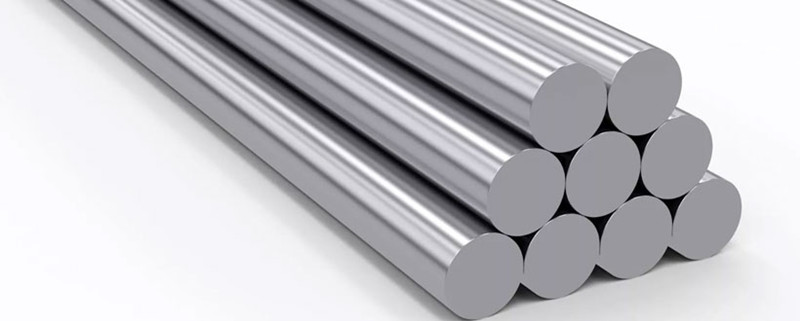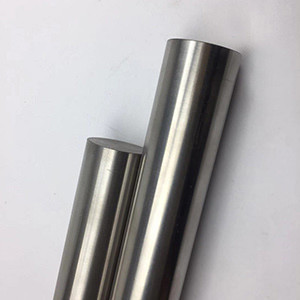Niobium Hafnium Alloy (C103)
C-103 alloy is a Niobium based alloy that is widely used in aerospace applications because of its incredible heat resistance, as well as its light-weight, cost, reliability, and ability to stand up to intense vibrations and cryogenic temperatures. The alloy has a melting point of 2350 ± 50ºC, and a density of 8.85 gm/cm3, making it ideal for use in space, as well as for components used within super-heated thrusters, and rocket engines. The C-103 Niobium Alloy is widely employed in the manufacturing of scramjet engine components.
In 1965, Niobium C-103 alloy was first manufactured in America and used in the nozzle extended segment of the Apollo manned lunar module rocket engine.
C-103 Nb alloy is a complex refractory metal alloy consisting of niobium (Nb) with additions of 10wt% Hf (hafnium) and 1wt% Ti (titanium). Used almost since the beginning of the space age, C103 is a proven, well understood material offering exceptional mechanical strength and stability across the huge temperature ranges encountered in space (from cryogenic to high temperatures where the metal becomes red hot). C-103 Nb alloys are among the leading refractory metals used in propulsion and space exploration technologies.
C-103 Nb is an alloy comprised of carefully controlled amounts of niobium, hafnium, titanium, and additional alloying elements. Using a precise and complicated manufacturing process, we produce C-103 Nb alloys with extremely consistent microstructure resulting in exceptionally well controlled material properties.
| Niobium C103 Chemical Composition Maximum Weight % (Except Where Otherwise Specified) | |||||||||
|---|---|---|---|---|---|---|---|---|---|
| Products | C | O | N | H | Hf | Ti | Zr | W | Ta |
| C103 | 0.015 | 0.025 | 0.01 | 0.0015 | 9 - 11 | 0.7 - 1.3 | 0.7 | 0.5 | 0.500 |
| Mechanical properties of C103 alloy at room temperature | |||||
|---|---|---|---|---|---|
| Grade | Composition (mass fraction)% | Modulus of elasticity/MPa | Tensile strength/MPa | Yield strength/MPa | Elongation/% |
| C-103 | 10Hf-1Ti-0.7Zr | 112490 | 428.9 | 259.3 | 20 |
C-103 Nb Alloy Properties
Fabricability, Stress Resistance & High-Strength
The primary advantage of C-103 Nb alloy is its exceptional high-temperature strength (for a relatively lightweight material) which it can maintain up to temperatures as high as 1482°C! This level of stability also extends into negative temperatures; in addition, C-103 also displays a low susceptibility to high-frequency vibrations at temperatures below -150°C. C-103 can also be made into such a variety of shapes and configurations due to its relatively high formability. In addition, it can be welded via TIG (tungsten inert gas) processes without significant loss of ductility or machinability. We target the alloy to meet or exceed ASTM/AMS specifications but are open to certain levels of customization when applications require it.
Niobium C-103 Fabrication Process
Niobium alloy C-103 has high melting point. Fabrication process involves C-103 ingots production process and mechanical process. Niobium hafnium alloy is processed into ingots by combining electron-beam cast with vacuum consumable electrode arc furnace. Then C-103 is extruded or forged over 1200℃. After rolling and drawing under 500℃, niobium hafnium alloy C-103 is manufactured into sheets, strips, rods, wire or other fittings.
Applications of C-103 Nb Alloys
C103 Alloy is a Niobium based alloy that is widely used in aerospace applications because of its incredible heat resistance, as well as its light-weight, cost, reliability, and ability to stand up to intense vibrations and cryogenic temperatures. The alloy has a melting point of 4260 ± 90ºF, and a density of 0.320 lbs./cubic inch, making it ideal for use in space, as well as for components used within super-heated thrusters, and rocket engines. The materials C103 niobium alloy is widely employed in the manufacturing of scramjet engine components.
C-103 is produced by alloying Niobium, Hafnium, Titanium and Zirconium together using a vacuum furnace to create very uniform ingots and then processing them accordingly into forms such as sheets, plates, rods, bars, billets, and custom manufactured parts.
We are also able to customize this product per your specifications.
If you need any assistance, please contact us.


